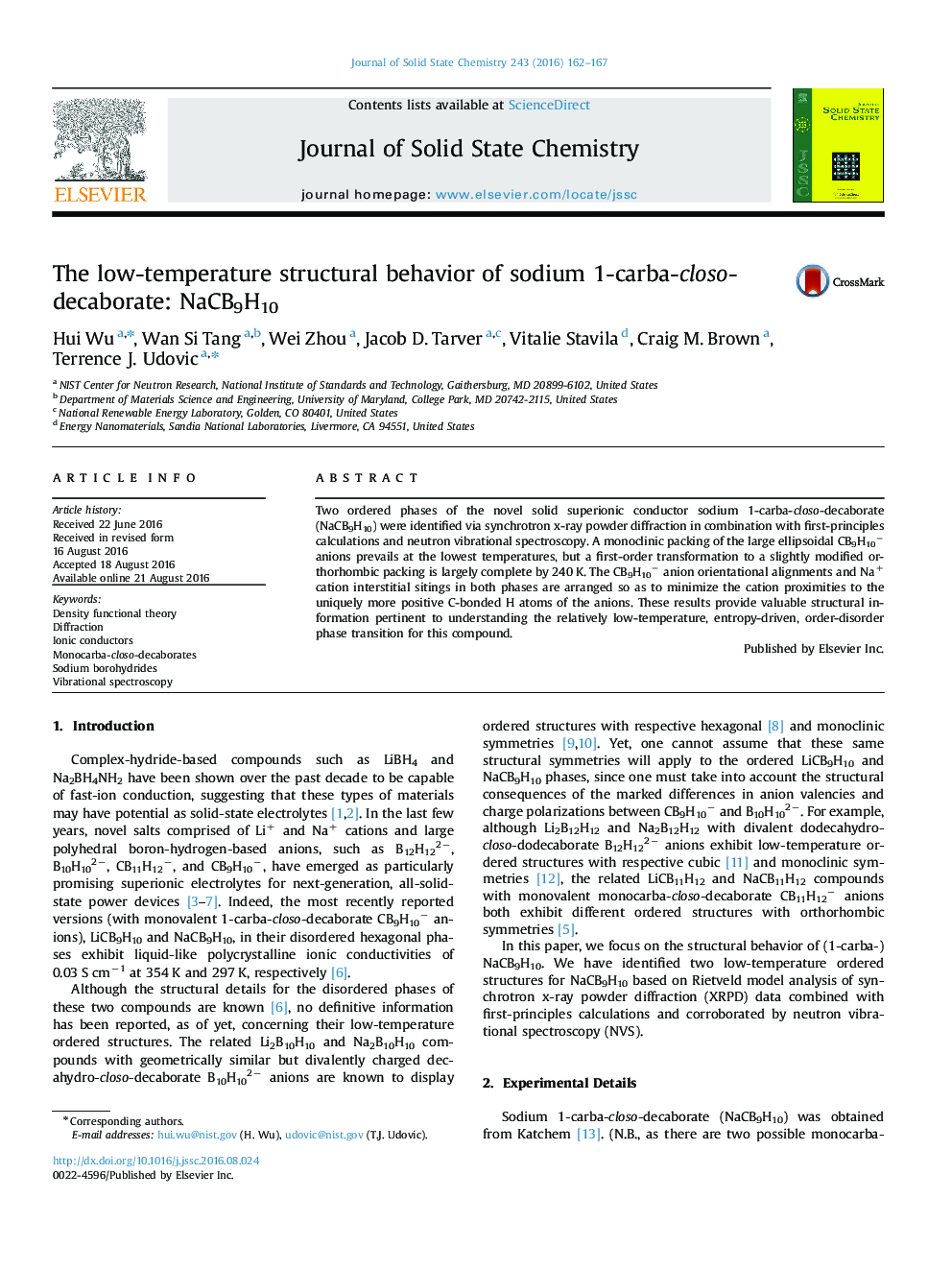| Article ID | Journal | Published Year | Pages | File Type |
|---|---|---|---|---|
| 1329410 | Journal of Solid State Chemistry | 2016 | 6 Pages |
•Two T-dependent ordered structures of Na(1-CB9H10) were determined by XRD.•The lower-T monoclinic to higher-T orthorhombic transition occurs from 210 to 240 K.•The main structural differences involve changes in the canting of the CB9H10− anions.•DFT and neutron vibrational spectroscopy corroborate the lower-T monoclinic structure.•The results are important for understanding the nature of this superionic conductor.
Two ordered phases of the novel solid superionic conductor sodium 1-carba-closo-decaborate (NaCB9H10) were identified via synchrotron x-ray powder diffraction in combination with first-principles calculations and neutron vibrational spectroscopy. A monoclinic packing of the large ellipsoidal CB9H10− anions prevails at the lowest temperatures, but a first-order transformation to a slightly modified orthorhombic packing is largely complete by 240 K. The CB9H10− anion orientational alignments and Na+ cation interstitial sitings in both phases are arranged so as to minimize the cation proximities to the uniquely more positive C-bonded H atoms of the anions. These results provide valuable structural information pertinent to understanding the relatively low-temperature, entropy-driven, order-disorder phase transition for this compound.
Graphical abstractOrdered monoclinic and orthorhombic NaCB9H10 phases were determined by XRD and DFT computations and corroborated by neutron vibrational spectroscopy.Figure optionsDownload full-size imageDownload as PowerPoint slide
